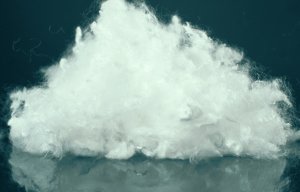
Kelheim achieves highest level in ZDHC MMCF
In this report, Robin Anson deliberates on the sustainability of natural fibres and man-made fibres, and presents the pros and cons of each.

3rd September 2018
Knitting Industry
|
Most consumers will say that natural fibres are better for the environment than man-made fibres. But the reality is that natural fibres fall short of consumer perceptions when it comes to environmental sustainability. It is said that 8,500 litres of water are needed to grow enough cotton to make a T-shirt and a pair of jeans, and most cotton growers use artificial fertilisers and pesticides which can be harmful to human health.
Wool growers use a toxic "sheep dip" to eliminate parasites, and manure generated from livestock accounts for more than 90% of greenhouse gas emissions in New Zealand. A lot more energy is consumed when bleaching, dyeing, printing and finishing textiles and clothing made from natural fibres than is consumed when processing similar items made from synthetic fibres as the latter dry more quickly.
Similarly, laundering items made from natural fibres consumes more energy than laundering items made from synthetic fibres. But most synthetic fibres are made using chemicals derived from fossil fuels, and there is growing concern that synthetic microfibres are polluting streams, lakes, rivers and oceans and may be entering the food chain. The optimal choice when it comes to environmental sustainability may prove to be lyocell a man-made cellulosic fibre. Lyocell fibre is biodegradable, and is made from renewable resources such as wood pulp, cotton linters or cotton production waste using an environmental friendly sustainable solvent spinning process in which the solvent is recycled.
In this report, Robin Anson deliberates on the sustainability of natural fibres and man-made fibres, and presents the pros and cons of each. Topics discussed include: the use of genetically modified cotton; water consumption; the risks associated with synthetic microfibres; and production methods used in the manufacture of man-made cellulosic fibres.
Publisher: Textiles Intelligence
8 pages, published August 2018
Report price: Euro 265.00; US$ 350.00
Reports are supplied in PDF format only via email and can be purchased by credit card or via PayPal. Alternatively, readers can email their order and we will invoice accordingly and send their report by email upon receipt of payment.
To buy this report, please select one of the buttons below or email [email protected].

Business intelligence for the fibre, textiles and apparel industries: technologies, innovations, markets, investments, trade policy, sourcing, strategy...
Find out more